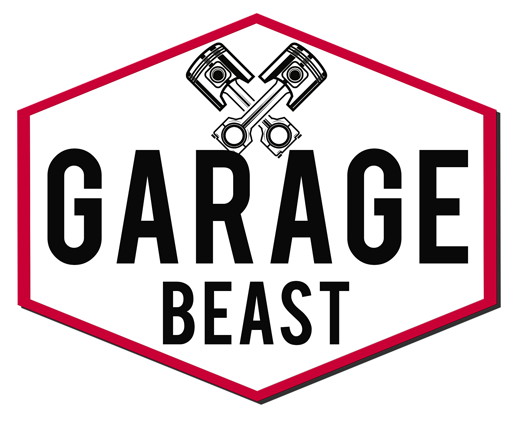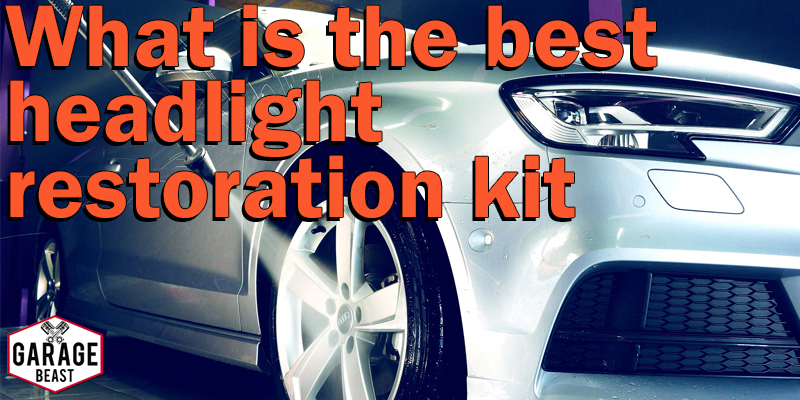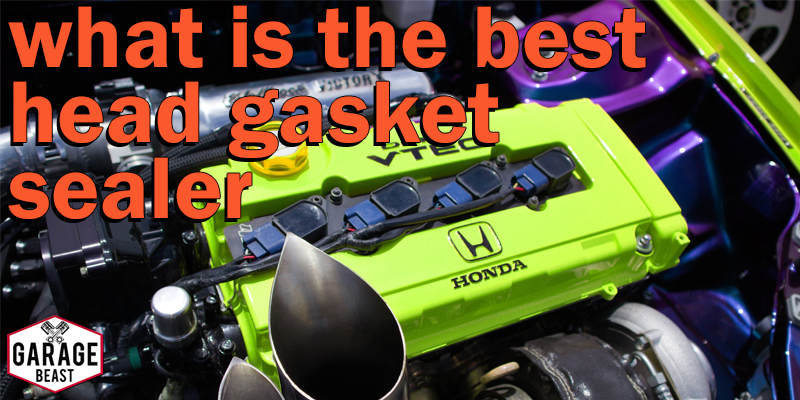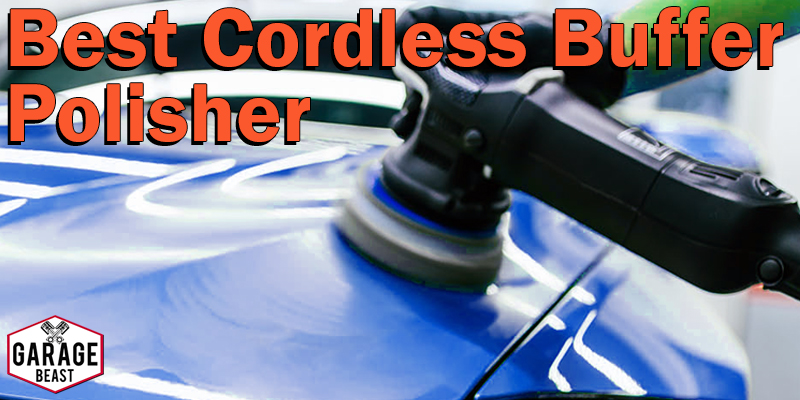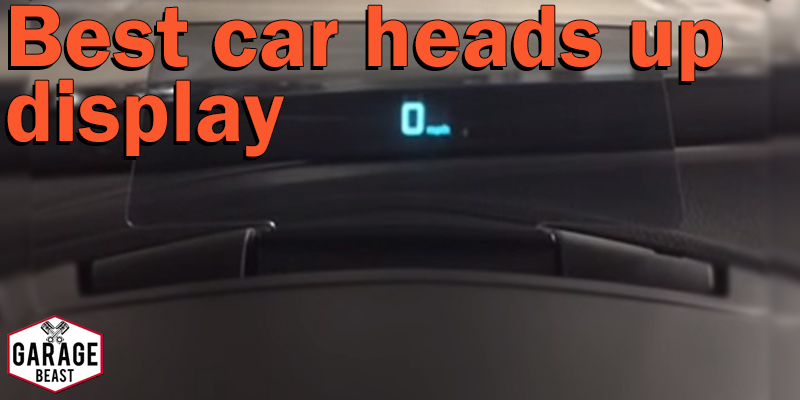Does your car have foggy headlights? Do you want to know What is the best headlight restoration kit? So we are going to discuss it here.
Foggy headlights are not only unsightly, but they can also reduce vision at night and pose a safety risk.
Instead of the more lasting glass sealed-beam lights, most current cars utilize replacement bulbs with plastics lens that are more susceptible to discoloration.
Clouded lenses are more than an aesthetic concern; they may jeopardize your safety by impairing night vision and lowering the efficacy of your headlights by up to 80%, according to our tests.
The sun’s ultraviolet rays are the major cause of headlight aging, which is exacerbated by various environmental variables.
We created a list to let you know What is the best headlight restoration kit based on variables such as sales volume, performance evaluations, quality of materials, positive customer feedback, and pricing.
3M Headlight Lens Restoration System
The 3M Headlight Lens Restoration System provides noticeable results at a low cost. A disc holder, 500-, 800-, and 3,000-grit polishing pads, a foam scouring pad, and a buff solution are included in the package.
3M recommends using a set of coarse TrizactTM discs to sand away the grit on your headlights in three steps.
For the way the polishing pads clear dirt, that some people go so far as to term them “magical.” Because the equipment is drill-based, it should require less time than hand-buffing, however, the overall labor time will be determined by how foggy your headlights are.
One thing to keep in mind is that the 3M Headlight Lens Repair Kit does not include a UV protection coating, despite the premise that the company sells it separately.
As a result, you could find yourself needing to use the 3M kit more frequently.
Customers like the price, the quality of the output, and the ease of use. However, others argue that the outcomes may not be as good as those produced by rivals’ kits. so you decide what is the best headlight restoration kit?
Fast Brite Auto Headlight Restorer Kit
Another headlight fixer that is simple to use. A headlight polisher, double-sided sponge, and sealing compound are included in the ingeniously packed kit.
On the yellow end of the sponge, apply the headlight polishing, and on the blue surface, apply the sealing solution.
Besides the two photos on the package, there are no directions; however, the procedure is quite simple because there are only two steps.
In our tests, the Fast Brite Auto Headlight Restorer Kit, which is often seen in television advertisements, was the simplest and quickest to use.
However, in terms of light transmission and aesthetics, it made a significant improvement.
Mothers NuLens Headlight Renewal Kit
Gloves, a towel, and headlight coated sealer are not included with this package. The first stage is to fasten the 800 grit sandpaper disc and connect the base plate to the machine like any other drill bit.
Switch to the 1,500 grit disc after wet-sanding the polycarbonate headlight glass.
The last sanding process is completed with a 3,000 grit foam disc. To polish, replace the foam disc with a PowerBall 4Lights foam ball and polish with a nickel-sized quantity of PowerPlastic 4Lights solution.
Finally, use a clean, dry microfiber cloth to buff the surface.
The Mothers NuLens Headlight Cleaning Kit improved the clarity of the lens significantly.
The polishing discs, on the other hand, are the same color, and the grit writing on the side is hit and miss. Some are simple to read, but others have a portion of the numbers written off the disc, forcing me to guess.
Due to the lack of a sealant, the automobile headlights are likely to fog up again very fast.
However, the guidelines state that I may keep the clarity by using a foam ball, polishing pad, and polishing solution. So now what do you think What is the best headlight restoration kit?
Meguiar’s Heavy Duty Headlight Restoration Kit
Sometimes a normal clean isn’t enough. Try Meguiar’s Heavy Duty Headlight Restoration Kit if you want something a bit more professional-grade.
All you need is a normal corded drill to use this Meguiar’s kit, which is engineered to handle the harshest you can throw at it.
This package may help you get rid of everything from extreme yellowing to significant oxidation and thick obscuring, leaving your lights clean, clear, and rejuvenated.
Begin by sanding the surface using the supplied sanding disks.
Then use the PlastX Clear Plastic Cleaner Polish and Easy-Buff Wool Pad included in the package, which conveniently connects to any corded drill.
Finally, use the Headlight Protectant included in the kit to prevent your headlights from yellow and re-oxidation for up to 12 months.
It will take some elbow grease, much like the majority of the products on our list, but customers have praised Meguiar’s professional-caliber kit for its long-lasting effects and good pricing. would all the above features make it a good choice if you wanted to know What is the best headlight restoration kit?
Chemical Guys Headlight Restorer
The Chemical Guys Headlight Restorer is designed for automobile owners who want an all-in-one solution that fits with a power tool or elbow grease. It provides convenience and personalization with components you can trust.
After cleaning, tape your headlamp lenses, put the restorer on whatever microfiber cloth you have, and massage it into the headlight.
Based on how much oxidation you have, this operation might take several minutes. Clean the headlight after the initial cleaning and reinstall the solution to polish.
This technique can be repeated until you get the appropriate level of clarity.
Customers can also use 2500-grit sandpaper if there is serious discoloration, according to the company.
While the compound produces excellent results, you’ll likely pay extra for items like washcloths and sandpaper if you already don’t have them on hand.
The Chemical Guys Headlight Transformer, on the other hand, could be the ideal headlight recovery kit for you if you now have certain components you like to deal with and are searching for a fresh polish and sealer choice. Does These features make it a good choice if What is the best headlight restoration kit?
CERAKOTE Ceramic Headlight Restoration Kit
If you’re hoping for ceramic coatings that not only shields against UV rays but also restores light source on heavily oxidized headlights, CERAKOTE has the finest headlight restoring kit.
A three-step method begins with a corrosion treatment wipe in the CERAKOTE Ceramic Headlight Restoration Kit.
Then, after cleaning and washing your headlight, you’ll apply a long-lasting ceramic coating to safeguard your automobile in the long run.
The polishing pads in this package don’t link to a power drill like those in a couple of some other multi-step systems on our list, so you’ll have to put in some elbow grease to obtain a high-shine finish.
However, for anyone who likes the hands-on experience and time commitment of a DIY project, it’s a fantastic solution. Customers rave about how simple the device is to use and how affordable it is.
Some people, however, believe the ceramic layer doesn’t give enough resolution.
Adam’s Polishes Headlight Restoration Kit
Adam’s headlights cleaning kit includes two microfiber towel and a set of gloves, and instead of polishing discs like the other restorative kits, it utilizes solutions.
You’ll get a Strong Correcting Solution, Detail Spray, and Finish Polish in this kit. It does not come with a sealer or a protecting covering.
The blue microfiber cutting mat and the base plate must be attached to the drill first. Apply 3-4 drops of the correction chemical to the foggy headlight housings and sand away.
When you’re done with this process, clean the lens with a microfiber towel and, if necessary, use the detail spray.
Repeat the technique using the four-inch purple foam pad as the second step.
Finally, wipe dry with a clean towel after using the white foam padding and final polish.
It arrives in a nice box, but the instructions are difficult to understand.
The “blue microfiber cutting pad” is actually a white pad with a tiny layer of blue foam below it.
I just went for anything blue, assuming the white pads might come in handy later.
SYLVANIA Headlight Restoration Kit
SYLVANIA is best known for its bulbs and replacing components, but it also makes items to help you repair your old headlight glass.
The SYLVANIA Headlight Restoration Kit uses a three-step procedure that provides some of the greatest clarification outcomes, demonstrating that it can handle heavy-duty yellowing.
This is why we think it’s the finest headlight repair kit altogether.
The first step in utilizing this kit is to use the “Surface Activator” to soften the plastic. After that, you’ll sand off the first clear layer and shine it using a polishing agent.
The next step is to use a UV blocker to avoid further sun damage. SYLVANIA is so sure of its quality that it backs it up with a lifetime warranty.
CLT Headlight Restoration Kit
CLT offers another product in the shape of disposable wipes. These wipes utilize a three-step procedure to repair headlight lenses in only two minutes: clean, dry, and coat.
Two yellow wipes for wiping (one for each headlight) and one orange wipe for polishing and covering the UV protective coating for each headlights are included in each box.
For automobile owners who don’t have severely foggy or broken headlights, this is a more cost-effective alternative.
The CLT Headlight Repair Kit, like other consumable wipes, works without the need of any equipment or extra materials.
This product works on headlights that are hazy, corroded, or discolored.
Just don’t anticipate tremendous results if your headlights are highly oxidized or foggy.
They are best used as a preventative maintenance item on newer automobiles, while they can be helpful on certain deteriorated headlights.
Tips for Headlight Restoration
It’s time to get down to business when you’ve decided What is the best headlight restoration kit then start learning a few tips.
Before you start bringing sanding paper and chemical products to the front of your automobile, there are a few things you should think about.
Here are a few pointers to help you minimize car damage and make the most from your headlight recovery:
• Before you go, make sure your vehicle is clean. While this is a simple task to miss, it is critical to prevent sanding any dust or debris into your lights. Before you start working on your headlights, make sure you use high-quality vehicle wash soap and a decent auto-drying cloth.
• Protect the region surrounding your headlights while sanding or using chemicals to avoid damaging your frame. Because some of the components in headlight repair kits might harm paint, masking tape should be used to line any surrounding areas.
• Make sure you’re safe. Cleansing solutions may be rough on body and inflict irritation to the eyes, so make sure you follow the manufacturer’s instructions and use protection and safety goggles.
• Stick to the instructions. You’ll be dealing with chemicals that, if not handled properly, might harm a headlight lens, so make certain you read the package instructions carefully. Wet polishing, for example, differs from dry polishing. Wet sanding eliminates microscopic particles that may clog dry sandpaper or cause deep marks by greasing the object’s surface with water.
Buying Tips
• It is a good idea to watch the manufacturer’s instructional videos online for any of the goods.
• Before buying one of these restorative kits, make sure your lenses are in good shape. Do not use a lens repair product if they seem clear. They’re abrasive, and they can easily harm lenses that don’t require so extensive repair.
• You may require headlight bulbs if your glasses are clear but your lighting appear to be weaker than before. All bulbs fade over time, even if they don’t completely blow out, and should be changed after a few years.
• Preventative coatings from Sylvania must be allowed to dry after application. Plan on not using the automobile for at least an hour after it has been used.
Are headlight restoration kits any good?
When it comes to the question of “do headlight restoration kits work”? The answer is they basically assist you in sanding off the broken lens coating and reapplying a protective coating.
A little elbow grease is required to complete the kits. Some tasks necessitate the use of an electric drill. The repair kits are 100% effective, and they’re a do-it-yourself activity that you can do in your driveway or carport.
After utilizing these kits, you’ll notice a significant increase in your night vision.
The kits aren’t meant to be a long-term solution.
According to our experiments, the hazing effect will reappear after a year and will be evident.
You can try to clear up the fogginess yourself with one of the many headlight repair kits available.
The lenses are generally sanded with a light abrasion, polished, and coated with a sealer that is claimed to keep them clear in a multistep procedure.
The quantity of haziness on the lens, as well as the equipment used, might affect the outcome.
Why do you need a Headlight Restoration kits?
Headlight repair treatments are meant to remove that unattractive look by employing solutions that break down all of the dust and debris that has accumulated over time.
To remove the buildup, several of these kits utilize sandpaper to wet sand the outside surface of the headlight.
After that, apply a protectant or polishing to remove any remaining dirt or film while also adding a new level of safety to your headlight glasses.
More importantly, restoring the luster to your headlights will make driving safer.
Headlight lenses that are cloudy can reduce visibility by up to 40%.
As you can see, there are a few high-quality products available, each with its own set of advantages and disadvantages.
When selecting the best headlight cleaning for your vehicle, keep the following points in mind:
Single product vs. whole kit:
Based on your degree of DIY vehicle knowledge, you may probably have microfiber applicator towels or sandpaper on hand and will just need a tube of polishes to repair your headlights.
If you don’t, you’ll probably want to invest in a whole headlight lens restoration kit.
Time and effort:
Restoring your headlight may be tough, and you may need to continue the deep cleaning several times to achieve the required results.
You may accelerate up the procedure by using a drill adapter, but you could have problems washing hard-to-reach spots like corners.
In any case, you should set aside a few hours to restore your headlights.
Protection against the sun:
Some treatments are effective at recovering serious discoloration in headlights; however the major culprit is UV radiation from the sun.
You may find yourself redoing the operation in a few months if you do not get a product with durable headlight protection.
